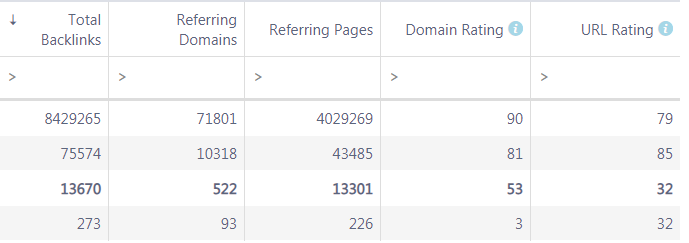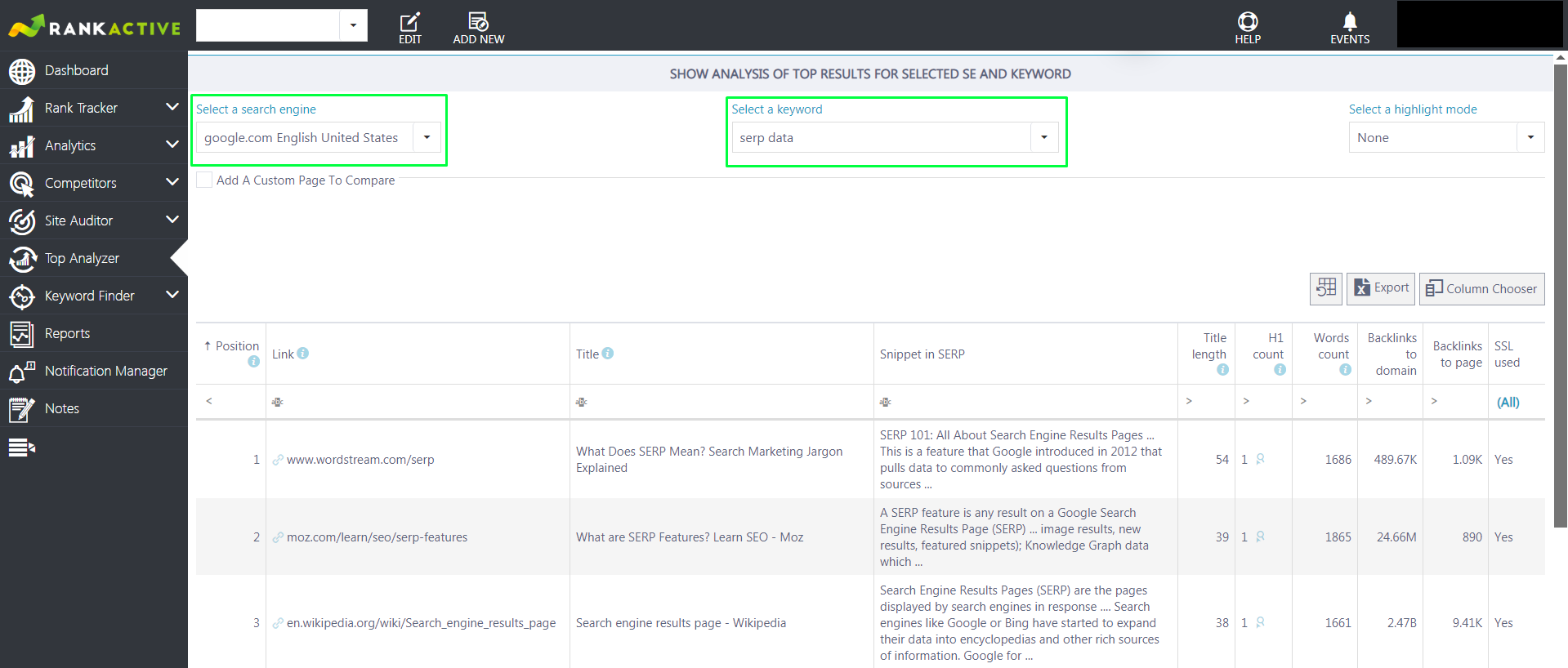What Is Domain Authority and Why You Should Care About It
19 April 2019 Leave a comment CONTENT MARKETING, LINK EARNING, ON-PAGE SEO
How well does your site perform? Marketers have several ways to measure the effectiveness of SEO efforts, and one of them is domain authority. As all other metrics, this one has its history and importance for your online strategy. Do you want to know more?
Today, we’ve decided to figure out what websites exactly we call “authoritative” and why SEO experts work hard to increase domain authority. Join us if you do care about your position in SERPs and factors that have an impact on it.
First Things First: What Is Domain Authority?
Domain authority is an SEO metric that predicts the website’s performance in SERPs based on several indicators. The main index, in this case, is the number of backlinks leading to your site as well as the “quality” of web sources where you locate a backlink.
The domain authority score ranges from 1 to 100. The most popular web platforms, such as Facebook or Wikipedia, are marked with over 90 points. The same happens for specific industries. Well-known and trustworthy platforms would have the highest domain authority index.
So, if you run an online business, do not compare your score with that of Amazon. Instead, conduct market research and identify your closest competitors. Only after identifying your market competition, you get the big picture of the domain authority score.
The Brief History of the Domain Authority Metric
The metric was invented by Moz, a company focused on monitoring online social metrics. Moz was founded in 2004 and grew hugely since then. That’s why now it dictates the rules of SEO analytics. For the record, high revenues allowed the company to acquire GetListed and Followerwonk, the leading players in the analytics industry.
Domain authority appeared as a mixture of two other metrics: MozRank and MozTrust. The hardest part is to regularly monitor Google updates and make sure that domain authority meets new requirements. That is the reason for the metric to change quite often.
Is It Important for Your Rankings?
We have no doubts that you should draw your attention to the domain authority metric. You can use it to predict how high your website will rank in search results. This is a great instrument in the overall marketing analytics and specifically in the competitor analysis.
At the same time, you must remember that Google does not consider domain authority as an official ranking factor and it doesn’t have a direct influence on SERPs.
You’ve got an opportunity to apply the best SEO practices. Keep in mind that the 100 score is not important. Instead, you should follow the scores of your competitors. If their domain authority is higher, you can check their websites and find new ways to enrich your SEO efforts.
Domain Authority vs. Page Authority: Is There a Difference?
You should never confuse these two concepts. Although the meaning is in their names, domain authority and page authority are often a stumbling block for many marketers.
Page authority was also developed by the Moz team, and it has the same 1-to-100 score concept. The main difference is that the score concerns one page but not the whole website.
Let’s say you’re running a corporate website with a blog. You have to follow specific rules when writing a new article, so you probably want to monitor a specific blog post – this is when you should opt for page authority. Plus, it is also a relative metric, which means you have to compare your results with the competitors’ pages that use the same keyword.
Interestingly, if page authority is low, it’s not necessarily a bad sign. Maybe, you’re ranking for a narrowly-focused keyword typical for a particular industry. Such a result signals that the competition for this keyword is low, and you have a chance to appear on the first page of search results.
Domain Authority for RankActive Users
Have you already tried out our Competitors Inspector? There traffic, rankings, visibility, and keywords subsections, and all of them give you detailed information on your competition.
The good news is that starting competitor analysis will take you only several minutes. You have to open Settings and fill in domain names of your competitors. From now on, the tool will gather analytics for you.
In the Backlinks subsection, you’ll find both a graph and a spreadsheet for a more detailed overview. The chart displays the total number of backlinks that lead to the websites of your own and competitors.
In case you need more details, check the spreadsheet below. Along with total backlinks, there are more metrics for you to check:
- Referring domains: the number of domains with references to the listed website.
- Referring pages: the number of pages with backlinks that lead to the listed website.
- Domain rating: reflects the strength of the site’s backlinks profile. This metric is the closest to domain authority, and it also has the 1-100 score.
- URL rating: reflects the strength of the website’s URLs backlinks profile. It predicts how high a URL will rank in web search.
Looking for something more? RankActive can help you with page authority too. For instance, you have a keyword in mind, and you want to know your closest competitors ranking for this keyword idea – use our Top Analyzer to get the data.
Again, you don’t have to be an SEO guru to figure out how to use this tool. You need to specify one of the search engines you’ve defined for your project, then, select one of the keywords you’re ranking for.
That’s what you eventually get with this research. There are 10 websites that have the highest positions for the given keyword. This data allows you to look at the competition from a different angle and improve your SEO strategy.
How to Increase the Domain Authority Score in 3 Steps
And here comes the most exciting part. What can an SEO expert do to affect the website’s domain authority? You might use these good old tips already, but let’s check them one by one just to be sure.
1. Check the Backlinks You Already Have
Do you remember every link that leads to your website? There’s no need for that when you have special tools in stock.
Even though Google pays lots of attention to your backlinks profile, it’s very tempting for SEO specialists to use some black-hat tactics. This is the reason why backlinks appear in spam comments or on the websites with a questionable reputation. These links are considered as low-quality, and a website can be penalized because of them.
To deal with this issue quickly, open your Search Console account. There, you will find the full list of backlinks and their anchor text.
2. Build Up New Backlinks
Create all of the new backlinks with the quality in mind. One high-quality link can do much better than a dozen of spammy ones. Just pick the best content you have at the moment and pull the trigger.
The process begins with identifying the most influential web platforms in your industry. Depending on the business you’re running, you can outreach global or local audiences. Think like your customer and act accordingly.
Some platforms would allow guest posting, and some would agree to mention your website occasionally. In any case, follow the platform’s rules and use every opportunity to collaborate with influential web sources.
At the same time, you can mention your website in the comment section providing some helpful insights. No matter what way you choose, your content should always remain useful and understandable for your target audience.
3. Do Your Best to Start Natural Link Building
That’s what all the marketers dream of: someone would link to their content just because they think it’s cool. Luckily, this dream comes true as soon as you start creating engaging articles with tons of useful information.
What would we recommend for natural link building? Remember these tips:
- Don’t be afraid to create wordy articles. If readers get all the information in one place, they’ll probably save it for later and share with others.
- Add high-quality visuals. It seems so obvious, but images are almost as much important as the text itself. First, visuals should be compressed so they wouldn’t affect the loading speed of the web page. Then, they help to break a big piece of text into smaller parts. And if you add keywords to alt tags, you have another opportunity to get higher rankings.
- Include a CTA and sharing buttons. In other words, you should encourage people to make the next step. It can be sharing an article as well as making a purchase on your website, contacting the team, or posting a comment.
- Follow the on-page SEO best practices. If you do everything right, your content will bring you maximum benefit. To conduct your content audit immediately, use our Site Auditor.
Domain Authority as Another SEO Opportunity
So, what do you think about domain authority so far? For some of us, it may be not a high priority, but we all should agree that this metric can help acquire new leads in the future. Considering that Google pays more attention to the quality of your content, working on authority is a good way to follow the latest Google algorithms.
Have you already checked your website’s backlinks? Now it’s time to choose a source for new links and gradually refine your content strategy. All in all, our primary goal is to provide high quality in every aspect of work.
Tags: backlinks, competitors analysis, competitors inspector, link building, on-page SEO, Site Auditor, Top Analyzer
Like this article? There’s more where that came from.
- 5 Questions to Ask Yourself Before Paying for Rank Tracking Software
- 5 Serious Mistakes Beginner SEOs Make and How to Fix Them
- Why We Use Google’s New Link Attributes and You Should Too
- Title and Description in 2021: Why Google Rewrites SEOs’ Meta Tags
- What We Should Learn From Google’s “About This Result” Feature






